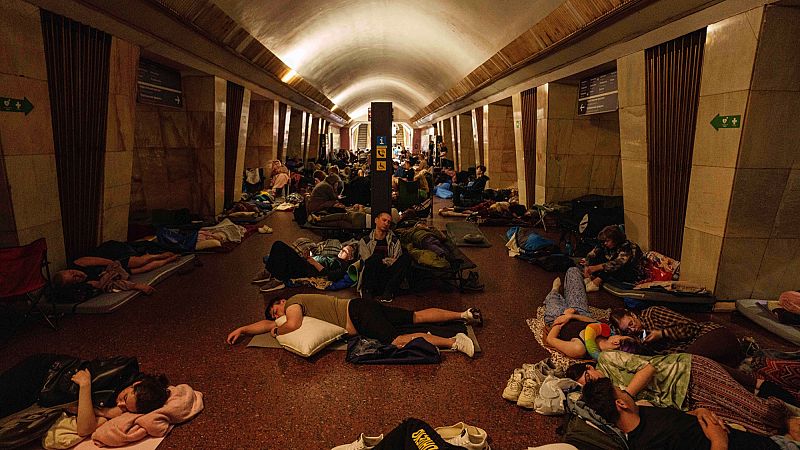
Escalation of Aerial Attacks by Russia on Ukraine
In the first 10 days of July, Russia launched a staggering total of 2,516 Shahed-type drones and decoys at Ukraine, with attacks occurring every single night. This high volume clearly indicates Moscow’s strategy and its intent to maintain pressure on the country without reducing its offensive operations.
This number surpasses the total number of drones launched in the entire month of June, when Russia deployed 2,453 drones against Ukraine. The recent surge highlights a concerning trend in the conflict, with attacks becoming more frequent and intense.
During the latest assault, Russian forces launched 397 drones against Ukraine overnight on Thursday. On Wednesday evening, Ukraine’s Air Force issued multiple alerts warning that swarms of Russian drones were targeting various regions across the country, with Kyiv being a primary focus.
A significant portion of these Shahed-type kamikaze drones turned out to be decoys. Moscow has increasingly used these decoys to overwhelm Ukrainian air defenses, aiming to cause maximum damage and casualties. These attacks typically begin with several waves of drones, followed by cruise and ballistic missiles.
Following this pattern, Russia fired eight Iskander-M ballistic missiles, six Kh-101 cruise missiles, and four S-300 guided air defense missiles overnight on Thursday, primarily targeting Ukraine’s capital. Despite the ongoing challenges, Ukraine's air defense forces managed to shoot down all eight ballistic missiles directed at Kyiv.
However, during the Wednesday overnight attack targeting the western city of Lutsk, six Kinzhal missiles managed to bypass Ukraine’s air defenses due to a shortage of US-supplied Patriot systems and relevant interceptor missiles.
Ukrainian President Volodymyr Zelenskyy expressed concern over the escalating situation, stating, “This is a clear escalation of terror by Russia — hundreds of 'Shaheds' every night, constant strikes, and massive attacks on Ukrainian cities.”
The United Nations reported that Ukraine experienced the highest number of civilian casualties in a single month during June, with 232 people killed and 1,343 injured. This data underscores the human cost of the conflict and the urgent need for international support.
On Thursday, Ukraine’s president arrived at the two-day Ukraine Recovery Conference (URC) in Rome. This conference marks the fourth major international event aimed at mobilizing political and private-sector support for Ukraine's reconstruction efforts.
The URC 2025 is organized jointly by the governments of Ukraine and Italy, with participation from the European Commission, international financial institutions, business leaders, civil society, and local authorities. The conference’s primary goal is to mobilize political, financial, and technical support for Ukraine, focusing on attracting private investment, strengthening human capital, rebuilding communities and regions, and advancing reforms for European integration.
A key focus of the conference is expected to be Russia’s intensified aerial attacks, as Moscow continues to target civilian infrastructure and residential areas. Zelenskyy emphasized the need for additional funding for the production of interceptor drones and the supply of air defense systems for Ukraine.
Ukrainian Foreign Minister Andrii Sybiha announced that Zelenskyy is scheduled to hold further talks in the Italian capital with Washington officials to discuss sanctions policy and the imminent adoption of a new US sanctions package against Russia.
Zelenskyy has already met with US Special Envoy for Ukraine Keith Kellogg in Italy. Additionally, the Ukrainian president has spoken with Pope Leo XIV, who reiterated his willingness to host both Russian and Ukrainian representatives for negotiations at the Vatican.
The Kremlin previously dismissed the Vatican as a potential venue for the talks. However, given the lack of progress in previous negotiations, such as the two rounds in Istanbul, Kyiv may consider relocating the process elsewhere.
The third round of talks between Russia and Ukraine was expected by the end of June, but no agreement has been reached yet. This delay highlights the ongoing challenges in finding a diplomatic solution to the conflict.
